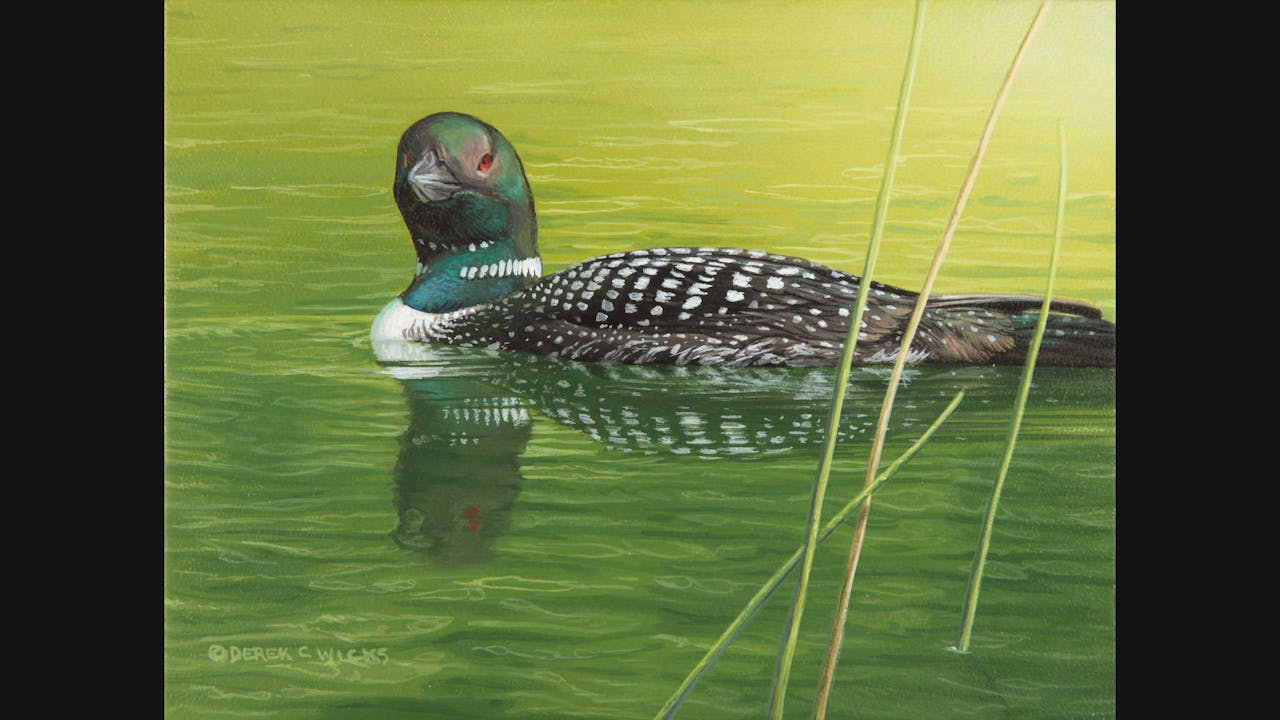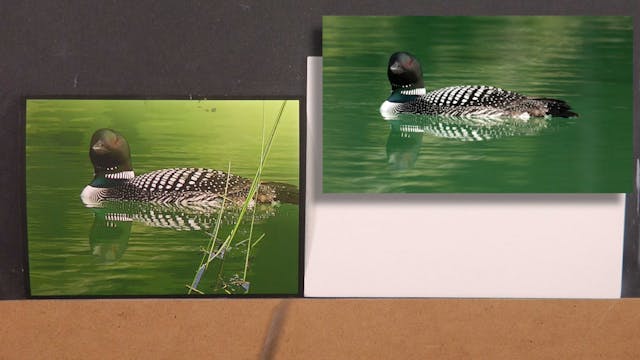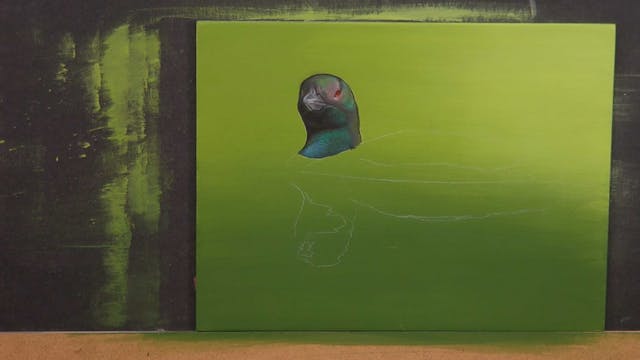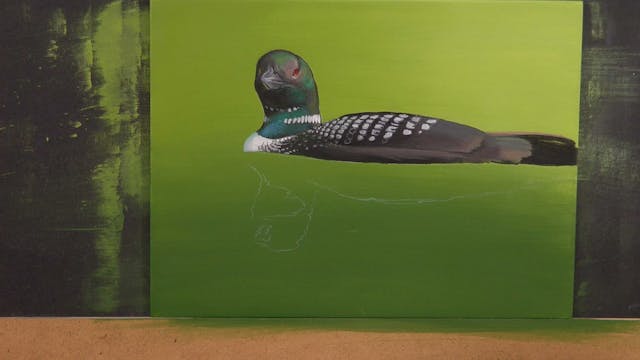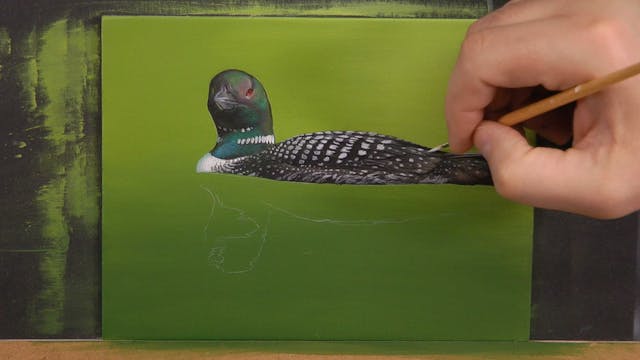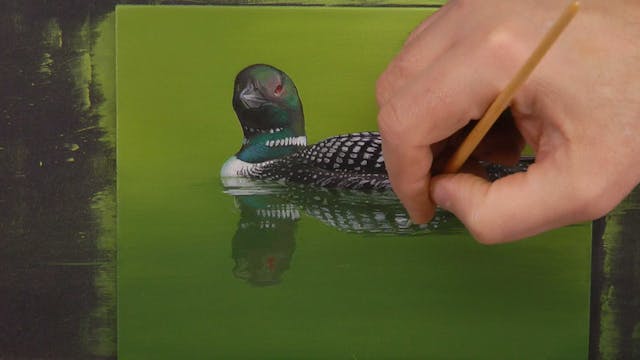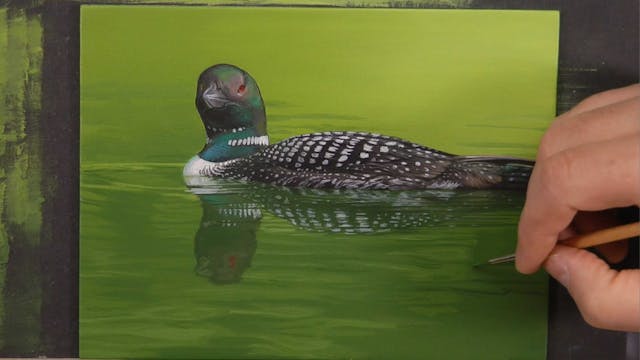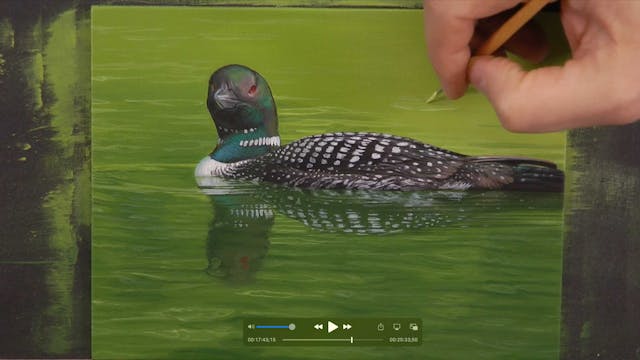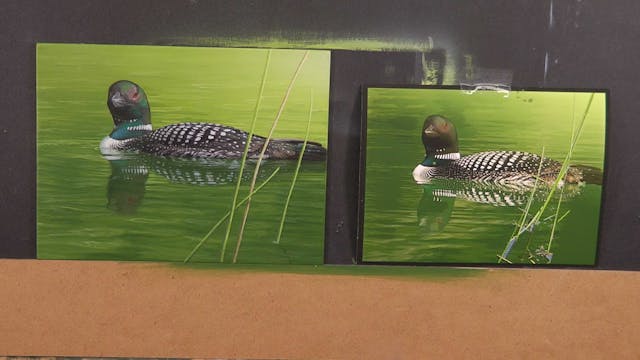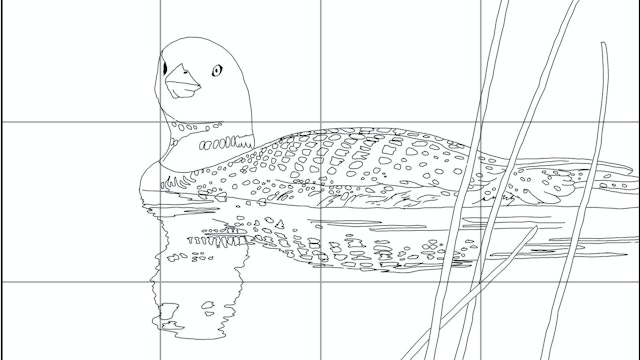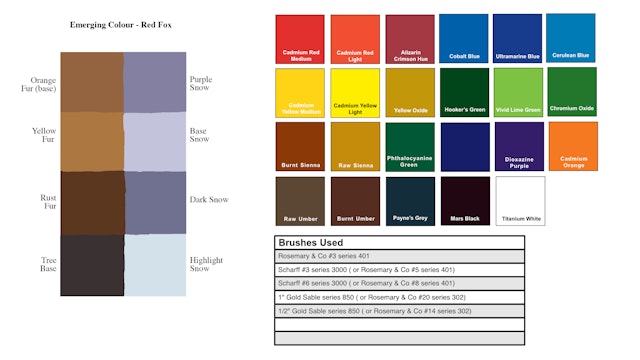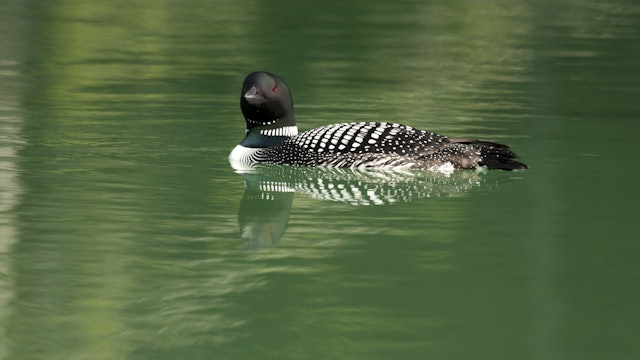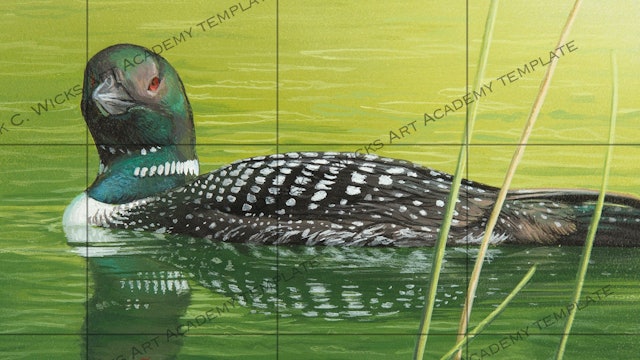Common Loon
Run Time: 3Hr 35 Min
Video Size: 1920x1080 Full HD
Believe it or not this painting was inspired by a harrowing experience with an elk, full story in part one! Loons have always been one of my favorite birds to paint. I find the subtle colour variations in their black sheen to be challenging to paint, making them a whole lot of fun to render.
Painting black and white feather, fur, or textures can be difficult to make them look alive and vibrate with colour. In this tutorial learn how to add life to black and white and how to break up and then render high detailed water. We will finish off the tutorial by adding a few reeds to break up our composition and to add depth in a minimal element painting.
Difficulty: Beginner
Board Size: 6 x 8 Inches
Downloadable Lesson Aids: Line Drawing, Colour Template, Materials List, Reference Photo.
-
Common Loon Pt.1
In part one of this loon painting we mix our base colours and then block in the board using blends to create a gradation.
-
Common Loon Pt.2
In part two we concentrate on building up the shape and form in the loons head and add initial detail.
-
Common Loon Pt.3
In part two we move on to the body building space and form. We then learn how to create the spotted pattern and how to vary the values to create shape.
-
Common Loon Pt.4
In part four we learn how to take our blended areas and break them up to create feathers and down. We finish off by adding detail to the body.
-
Common Loon Pt.5
In part five we start to paint our reflection and learn how create a 'ripple' effect in our water and how to paint a 'murky' look.
-
Common Loon Pt.6
In this part we start to add movement to our water. We learn how to use line and direction to create a soft 'flow' to our water textures.
-
Common Loon Pt.7
In this part we start to add high detail to the water to create a subtle 'swirl' effect. We finish detail in the foreground and start on the background.
-
Common Loon Pt.8
In this final part of the loon tutorial we add the foreground reeds to break up the composition and add depth to a minimal painting.

